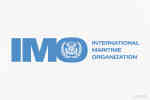Step 1 of 3•4 minutes read
International Maritime Organization Regulations
When it comes to cargo securing at sea, the rules and regulations may be divided into two categories:
- Cargo securing to the vessel.
- Cargo securing in Cargo Transport Units (CTUs).
Efforts to ensure fulfilment of the first of these two categories, securing the cargo to the deck, are normally done by stevedores or deck crews under the supervision of the chief officer. In contrast, the stowage and securing of cargoes in and on CTUs are often done well before the sea transport at the production site or in port facilities.
Safe transportation of cargo requires both of these tasks to be properly performed. The efforts should be guided by applicable international rules and regulations, the structure of which is described in this chapter.
Shipping is one of the most globalised and also one of the most dangerous industries in the world. Since the seaborne distribution of cargoes is performed by most ship owners in both domestic and foreign waters, regulations must be harmonised between countries. Therefore, the International Maritime Organisation (IMO) was established in 1948 as a part of the United Nations. IMO has the responsibility for improving safety and security at sea and for preventing pollution from ships to the environment.

Regulatory documents and guidelines developed by IMO are given to the maritime industry in the form of different instruments, such as:
- Conventions.
- Codes.
- Guidelines.
- Model courses.
The technical work of devolving these instruments is mostly carried out in IMO’s committees, such as The Maritime Safety Committee (MSC), or sub-committees, such as The Sub-Committee on Carriage of Cargoes and Containers (CCC). At the same time, the more important documents are approved in IMO’s General Assembly through resolutions.
Apart from conventions, most IMO documents are not mandatory and are issued for guidance only. Still, flag states may choose to implement them into their national legislation, although national deviations from the IMO regulations may occur.
The most important IMO instruments regarding cargo securing are further described below.
Conventions
SOLAS, Safety of Life at Sea is one of the most important conventions dealing with global maritime safety, as it covers a wide range of measures to improve the safety of shipping. The first version of SOLAS was issued in 1914 following the sinking of the Titanic, where 1500 lives were lost. Since then, several versions have been published. When the IMO publishes a convention, it becomes mandatory legislation in the flag states of the Contracting governments and for their vessels. Contracting governments are member countries of IMO that adopt work and publications from the Organization.
The requirements for cargo securing in SOLAS are mainly kept on a general level. However, point 6 of Regulation 5 in Chapter VI deals with very specific requirements, which are expressed as follows:
All cargoes, other than solid and liquid bulk cargoes, cargo units and cargo transport units shall be loaded, stowed and secured throughout the voyage in accordance with the Cargo Securing Manual approved by the Administration. In ships with ro-ro spaces... all securing of such cargoes, cargo units, and cargo transport units, in accordance with the Cargo Securing Manual, shall be completed before the ship leaves the berth. The Cargo Securing Manual shall be drawn up to a standard at least equivalent to relevant guidelines developed by the Organization".
In the same chapter of SOLAS, point 1 of Regulation 2 is also very concrete, and it is expressed as follows:
The shipper* shall provide the master or his representative with appropriate information on the cargo sufficiently in advance of loading to enable the precautions which may be necessary for proper storage and safe carriage of the cargo to be put into effect. Such information shall be confirmed in writing and by appropriate shipping documents prior to loading the cargo on the ship."
* By this text, the shipper is required to give appropriate information about the cargo to the vessel so that it can be safely secured to the ship.
Further, point 2 of Regulation 5 concludes the following:
Cargo carried in a cargo unit shall be so packed and secured within the unit as to prevent, throughout the voyage, damage or hazard to the ship and the persons on board."

SOLAS: International Convention for the Safety of Life at Sea